
Gems spring underfoot
While your eye may be drawn upwards to bright young leaves and enchanting blossom, it’s worth checking out what’s underfoot for your spring skincare.
There were 8 real spring gems on my recent walk, but only half of them were things I’d use in skincare – can you guess which 4?
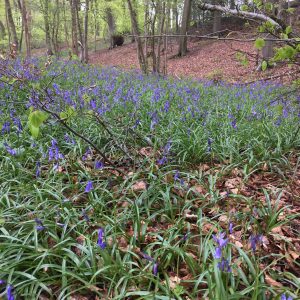 3. Bluebell
3. Bluebell 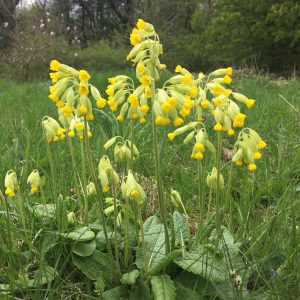 4. Cowslip
4. Cowslip
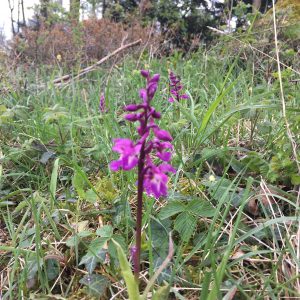 5. Orchid
5. Orchid  6. Wood Anenome
6. Wood Anenome
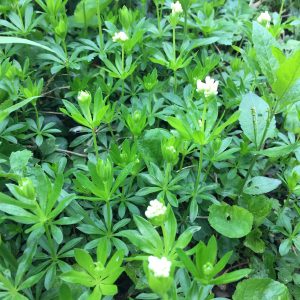 7. Woodruff
7. Woodruff 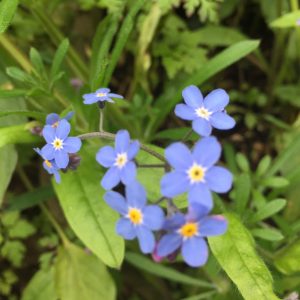 8. Forget Me Not
8. Forget Me Not
1. Dead Nettle
It looks like a stinging nettle but is from a different family and has no sting.
Would I use Dead Nettle in skincare?
Yes. It’s recommended by the herbalist Gerard as a complexion water. You can also macerate the leaves in oil to make a face oil. Also, the crushed leaves bound to open wounds will assist rapid healing.
2. Violet
Most fragrant in sunshine in early Spring. Though the fragrance appears to fade over time, it’s not the scent going, it’s our ability to smell it that fades. Leave them for a while then come back to smell the scent again.
Would I use Violet in skincare?
Yes, it is cleansing, emollient and healing, so I’d use it in a face cream. It’s also lovely to include in perfume you can even dry the the flowers to add a decorative touch to perfume oils.
3. Bluebell
A fantastically fragrant Spring presence, especially in shady the beech woods that are plentiful in Gloucestershire where you can walk for miles with bluebells as far as you can see.
Would I use Bluebells in skincare?
No, the only wort-cunning I associate with bluebells is the bookbinders use of bluebell sap in their glue.
4. Cowslip
The plant takes is name from the Anglo Saxon ‘cusloppe’ meaning a cow’s breath, for some its scent resembles the breath of a cow. Seemingly rare and delicate but I once walked through so many cowslips my boots were stained yellow.
Would I use Cowslips in skincare?
Yes, they can be used in face cream or ointment (infused in oil) or as a cold infusion to improve complexion. In Elizabethan times they were favoured as a spot treatment. However, I’d be certain to do a patch test first (as with all new skincare) because cowslips in particular are something certain skins can be sensitive to.
5. Orchid
There’s always a buzz of excitement in the air when an orchid is spotted (or is that the buzz of bees who love their nectar?). Even though some varieties are more common than others around the Stroud valleys it always feels like a special treat to see one shining in the undergrowth.
Would I use Orchid in skincare?
No, not this type of orchid, these should be left to thrive where they are. Of course ‘orchid’ is a scent we do come across in skincare products, but it’s typically the tropical vanilla orchid, not our native rarities.
6. Wood anenome
One of those pretty plants that makes the most of dappled light before the trees are fully in leaf, it makes a wonderful covering to the woodland, though with a sharp, musky smell.
Would I use Wood Anenome in skincare?
No, I’m not aware of any skincare benefits and that smell is certainly off putting. It’s pretty low down on the list of things for animals to eat because of its acrid taste and it’s poisonous to humans. One to enjoy the sight of but that’s all.
7. Sweet woodruff
I’m always thrilled to find this pretty plant with its whorling leaves. It smells like newly mown hay, something you may not notice at first as, magically, the perfume increases as it dries.
Would I use Sweet Woodruff in skincare?
Yes, but my favourite use for it is as dried leaves in a muslin bag to hang among clothes. Or even slipping a stem pressed flat into a book as a handy marker and nostalgic reminder of Spring walks. Sweet woodruff can be infused to create a firming complexion water, used in soaps and is useful as a fixative for keeping other scents in perfume.
8. Forget-me-not
Considered since Medieval times (or before) to be a sign of enduring love and faithfulness, once seen, how could we ever forget the Forget-me-not with it’s pretty blue petals and starry yellow eye. In Newfoundland it was used instead of the Poppy to remember those who died in war.
Would I use Forget-me-Not in skincare?
No, pretty though it is, even when pressed and dried, forget-me-not is not in my repertoire of skincare ingredients.
I’d love you to tell me any uses you know of for these spring plants, or others. Do enjoy experimenting but always gather and use plants with care for the environment and yourself, and remember to do your patch test as you learn about your skin and the ingredients it loves.

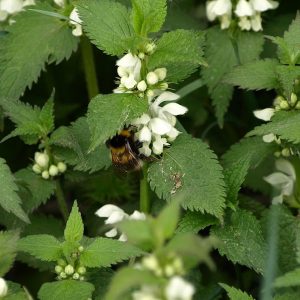
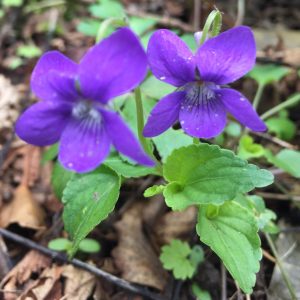

Was Really interested in reading and learning all about those eight plants
Thanks Jane, it was a lovely walk (with good company).
Hi Michelle, you’re absolutely right, and thanks for pointing out. Certainly not something I’d put in skincare (but, as you say, great for a salad). Apologies for misleading, I’ve corrected the image now, just a mistake through hasty posting. Thanks, Laura
Greetings from California! I’m bored at work so I decided to browse your site
on my iphone during lunch break. I enjoy the info you present here and can’t wait to take a look when I get home.
I’m shocked at how quick your blog loaded on my phone .. I’m not even using WIFI, just
3G .. Anyways, amazing site!
Lovely to hear from you, thank you, and happy to brighten your day. Do keep browsing, and you’ll get regular updates to your inbox if you join the mailing list. Take care.
[…] There’s more about the different plants you may see on your Spring walk here […]